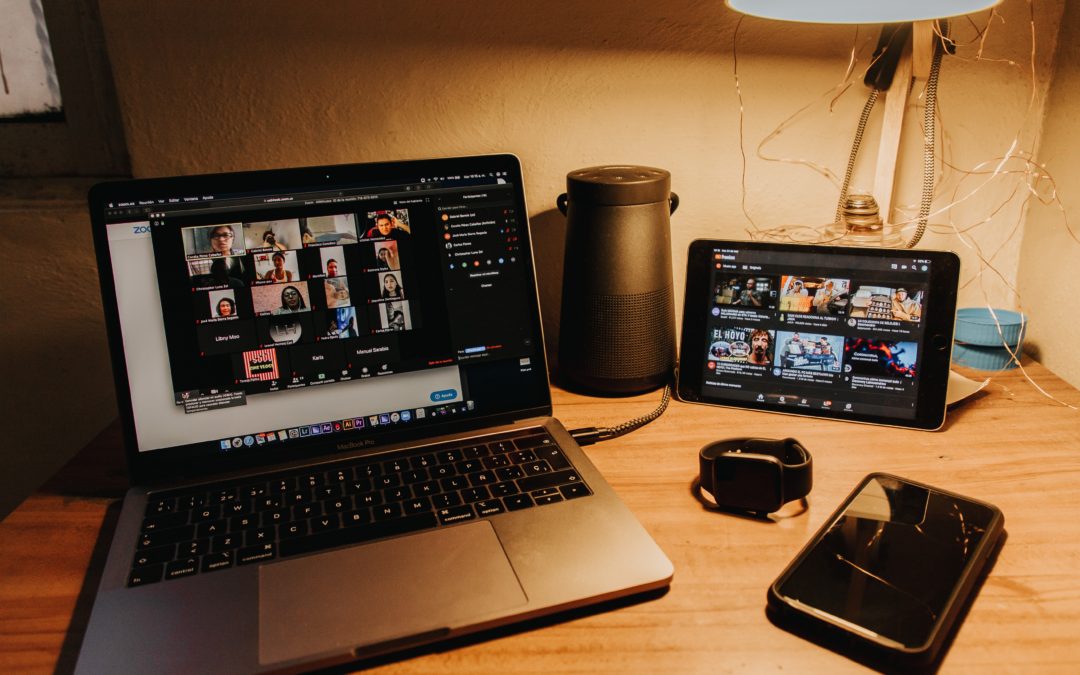A note from Todd: We’re thrilled to welcome a group of three talented students from both Drexel and Rutgers University to our team for the Fall. We’ve asked each of them to write for our blog to help you get to know them a bit… today’s post is from Charis Shin.
Throughout the past six months, our lives have completely migrated into the virtual sphere. It’s a stroke of good fortune, then, that even as physical connections have become increasingly limited, our online connectivity still allows us to interact with one another professionally and personally. Video-conferencing has become a lifeline for educators, working professionals, and friends alike. But as they say, with great power comes great responsibility, and while these platforms have their benefits, the constant barrage of virtual meetings and events have also led to a feeling of, well, general tiredness.
This feeling has become common enough that there’s a word for it now: Zoom fatigue, or a burnout that can be attributed to the overuse of virtual means of communication (Lee). Video calls have become draining because of the sheer volume of them, and also because the fact that humans aren’t hardwired to process information over these platforms. With our attention pulled in so many different directions and the means for multitasking at our fingertips, truly emulating the in-person experience of speaking to one another is difficult. Body language cues have become harder to read, speakers are resigned to claiming audio rights one at a time, and the video projections of our own faces leave us hyperaware and more self-conscious (Sklar).
That being said, there are ways to continue virtual interactions while still preserving our headspaces. These can range from institutional changes to personal choices that put our mental health first, and the easiest of them is to work in mini breaks from screen time into our schedules. For students like myself, Zoom fatigue is often the product of hours of online lectures, club meetings, and work for internships. In between my classes, I always make sure to get up, stretch, and even take a walk if time allows. I’ve been avoiding the temptation to use this as a chance to hop onto my phone, and have instead been picking up a book or grabbing a snack.
The Harvard Business Review outlines other fantastic ways to combat Zoom fatigue, which include reducing onscreen stimuli (like hiding ourselves from view), switching to phone calls if the opportunity arises, and avoiding multitasking on calls (Fosslien and Duffy). Personally, implementing these tips results in my turning down a few optional Zoom calls here and there, and understanding that missing out on one virtual game night won’t lead to lost friendships.
Key to all of these tactics is the need to understand ourselves and our limits, and to take intentional steps to adapt to this new normal. We may not know when the end of remote work will come– if it ever does– and so in the meantime, it has become more important than ever to build healthy and resilient habits. Little acts of self-care to avoid Zoom fatigue keep our long-term health in mind throughout these unprecedented times.
Sources:
Fosslien and Mollie West Duffy, Liz, and Mollie West Duffy. “How to Combat Zoom Fatigue.” Harvard Business Review, Harvard Business Review, 14 Aug. 2020, https://hbr.org/2020/04/how-to-combat-zoom-fatigue.
Lee, Jena. “A Psychological Exploration of Zoom Fatigue.” Psychiatric Times, Psychiatric Times, 27 July 2020, www.psychiatrictimes.com/view/psychological-exploration-zoom-fatigue.
Sklar, Julia. “’Zoom Fatigue’ Is Taxing the Brain. Here’s Why That Happens.” National Geographic, National Geographic, 24 Apr. 2020, www.nationalgeographic.com/science/2020/04/coronavirus-zoom-fatigue-is-taxing-the-brain-here-is-why-that-happens/.

